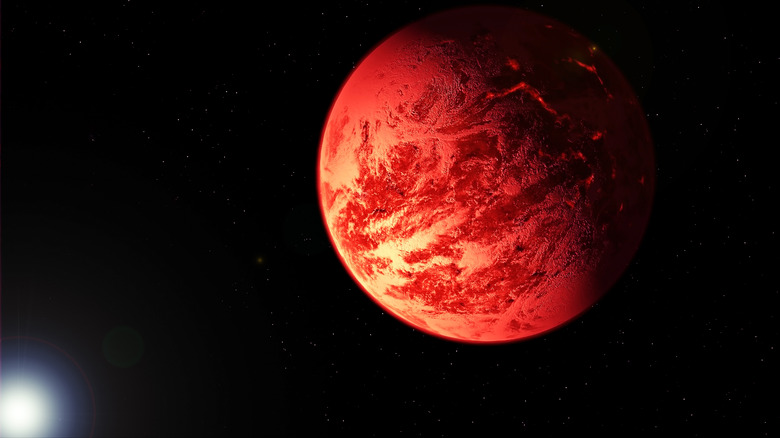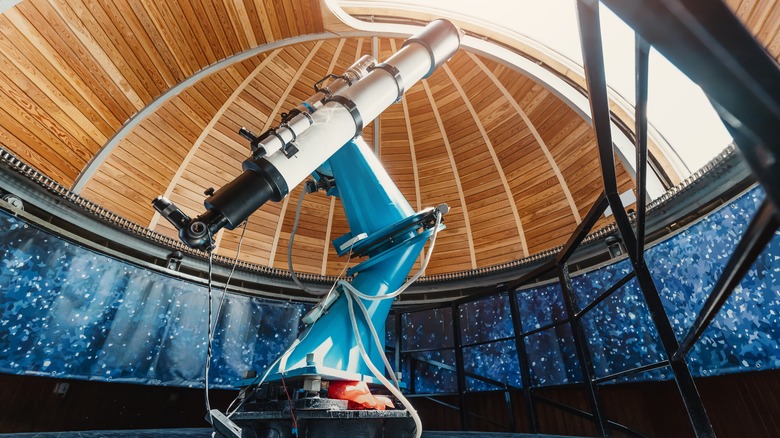A 17-Year-Old Intern Discovered A Planet The Size Of Saturn
Wolf Cukier was just 17 when he discovered an exoplanet the size of Saturn while working on a high school summer internship at NASA's Goddard Spaceflight Center in 2019. He had been given data from NASA's Transiting Exoplanet Survey Satellite (TESS) that had been flagged as unusual. This particular piece of data had been described as an eclipsing binary star, a system with two stars orbiting each other in a way that causes one to cross in front of the other from Earth's perspective (via Britannica). But Cukier quickly realized that this was not an eclipsing binary.
Of his initial discovery, Cukier said, "About three days into my internship, I saw a signal from a system called TOI 1338. At first I thought it was a stellar eclipse, but the timing was wrong. It turned out to be a planet" (via NASA). Cukier's discovery was later featured during a panel discussion at the 235th American Astronomical Society meeting. He also co-authored a paper about it along with his colleagues who aided in the discovery.
Cukier used citizen science data to find the exoplanet
The data Wolf Cukier was examining that led to his discovery of the exoplanet TOI 1338 was analyzed first by volunteers known as citizen scientists. These volunteers comb through data collected by TESS and other sources to help scientists make discoveries faster. Citizen scientists are a vital part of making discoveries in space because of the volume of data collected by telescopes and other instruments on a regular basis. Citizen scientists have helped make many discoveries through their work (via NASA TESS).
During Cukier's internship, he had been looking over data flagged by citizen scientists as eclipsing binary stars. When he examined the data from exoplanet TOI 1338, he too assumed that it was a binary star based on what he saw. While he later realized that there was an exoplanet there, the assumption that it was a binary star instead was not entirely wrong.
Cukier's exoplanet orbits two stars
Cukier's exoplanet discovery was not just unique because of his age when he discovered it, but also because it marked a milestone for TESS. The exoplanet, TOI 1338, was the first exoplanet found by TESS that is orbiting two stars. It was initially mistaken for an eclipsing binary because of this, but Cukier's careful examination prevented the exoplanet from being overlooked. This type of exoplanet, known as a circumbinary planet, is something reminiscent of Star Wars' Tatooine, but these planets are much more real. According to EarthSky, 14 cicumbinary exoplanets have been found so far.
Exoplanet TOI 1338's two parent stars orbit each other every 15 days. TOI 1338 has an orbit that is a bit difficult to track as it goes around both stars. It passes in front of the larger of the two stars every 93 to 95 days, meaning its orbits are not a set number of days like most planets. The exoplanet is about 6.9 times the mass of Earth, giving it a size a little smaller than Saturn. Many more circumbinary exoplanets like TOI 1338 could be discovered in the near future, as TESS will study hundreds of binary star systems (via NASA).


